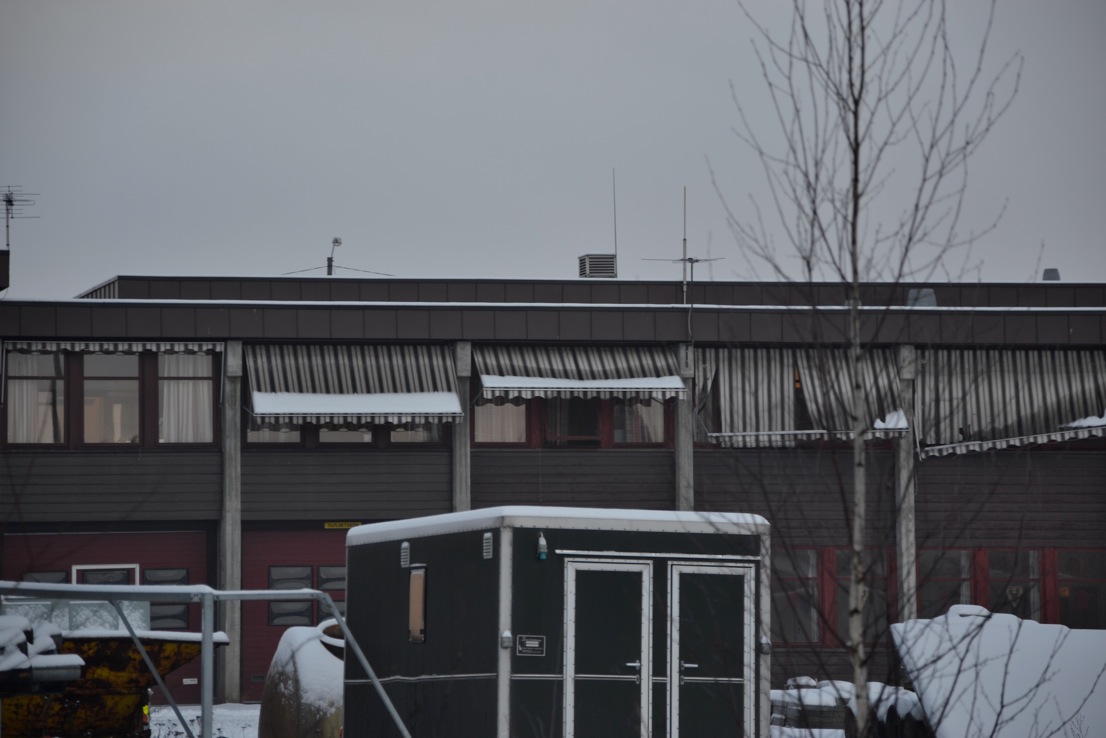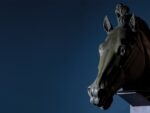Fredrik Værslev – Sunny Side Up

Prima mostra personale di Fredrik Værslev in Italia.
Comunicato stampa
Indipendenza Studio is proud to present Sunny Side Up, Fredrik Værslev’s
first solo exhibition in Italy.
In his latest body of work, Fredrik Værslev has turned his attention to an
often overlooked, yet all-pervasive component of the visual grammar and
basic iconography of suburbia. Grammars and iconographies that the artist
continues to rigorously scrutinize and also to vividly immerse himself in.
These new paintings make immanent the diagram, look, and temporality of
the canopy. In suburban residential areas canopies shelter, hide, promote,
embellish and mark houses, row houses, duplexes, apartment buildings and
blocks. Alien canvas-like patches, shells and surfaces attached to an
architecture that is often prefabricated, canopies are accessories that both
serve as arbitrary outside décor as well as highly functional prostheses that
facilitate certain operations carried out by these buildings.
Anyone familiar with suburban communities know that these canopies also
form assemblages in and by themselves; patterns, fabrics, colors, formats,
and striations - and that these, in turn, engage in competing compositions.
Which ornamental-facilitating canopies are able to elevate their houses,
owners and neighborhoods to a position that solicits and communicates good
taste, money, and social status? And which ones perform the inverse actions?
Ugly, untidy and tarnished ones - or those simply in bad taste - can negatively
affect huge residential areas both socially and financially.
But even more significantly: what are the intrinsic contests, skirmishes and
battles that are enacted among these aggregates of patches themselves?
What are the desires and affordances of the patches that regulate the light
effects and gazes of the neighborhood at the same time as they also deflect
and reflect the visual furrows of their adjacent canopies? Following a
rigorously contingent logic of their own - these paintings by Værslev behave
like a neighborhood of competing canopies. They are vectors of a noncoherent
mess, distorting and smudging the borders of control, of who does
what and what thinks when. They are black holes - one cannot know whether
they are in themselves, by themselves, or what they contain. If one was to be
near, or inside, one of these, the very inquiry would be suspended indefinitely
due to gravitational time dilation. They absorb the abrasion they are
subjected to, or - and this undecidability is a function of the non-coherent
INDIPENDENZA STUDIO
“mess” alluded to above - given to.
The “vision” of the painter Værslev is, however a reticent one and verges on
the pure, non-phenomenal, and material. It is a form of vision devoid of any
distinctive reflexivity on behalf of some imagined subject/object dualism. The
aesthetic itinerary of a canopy is one marked by a somewhat unattainable
moment of decision. A moment that coincides with its deterioration.
This is well-known to anyone paying the slightest attention to one’s own
attire: that gratifying moment when the everyday wear of, say, a pair of
bespoke brogues, has transformed them, if only ever so slightly, from their
unspoiled, box-fresh state and brought about that perfect, seemingly
effortless, slightly frayed look. Especially when set in motion together with
other garments, or, for that matter, desires. However, in the case of canopies
that exact moment usually seems to us too fleeting and insignificant to invest
aesthetic pleasure in. Maybe the canopies are just too far from our own
bodies. Be that as it may, such a moment is disseminated throughout
Værslev’s latest paintings. Here you find an idealized, yet wholly immanent
process of fragmentation, damaging, fracturing, a fading in and fading out
that ultimately implies a defacement of the different moments of visual
production. These huge patches of canvas are left out on the artist’s studio
roof, abused and beaten up by spray paint, tape, pollution, exhaust fumes,
rain, snow, winds, the moon, sunlight, and sometimes placed side by side, on
top of each other, bundled, some times bristling, snapping on, and at, each
other, emitting those sharp, biting sounds that one can hear from the sails of
a yacht where the crew and captain no longer are paying attention. The
clamorous sound of a quiet neighborhood at night. Through this process, the
canopies come across as recalcitrant (photo) prints (of) the physical world:
the ambiance, the abrasion, and even the “deep” ecology of such a world, is
here at once de-contextualized and made legible through the suction of an
unilateral vision of sorts. A vision that is unilateral because there’s no who or
what here: there’s just flat dilation. Perhaps the defining modus operandi of
paintings like these is something like a refurbished disappointment. “Styles
have become objects in history,” says François Laruelle, perhaps leading us to
believe that this disappointment shoots out from a generic subject. That is, a
clinamen preceding individuation or even anthropization. Here, a dilapidated
form of temporality, or dense materiality for that matter, is stretched and
distended across the pictorial plane, crisscrossing and de-saturating its
decontextualized depth and space.
Peter J. Amdam



